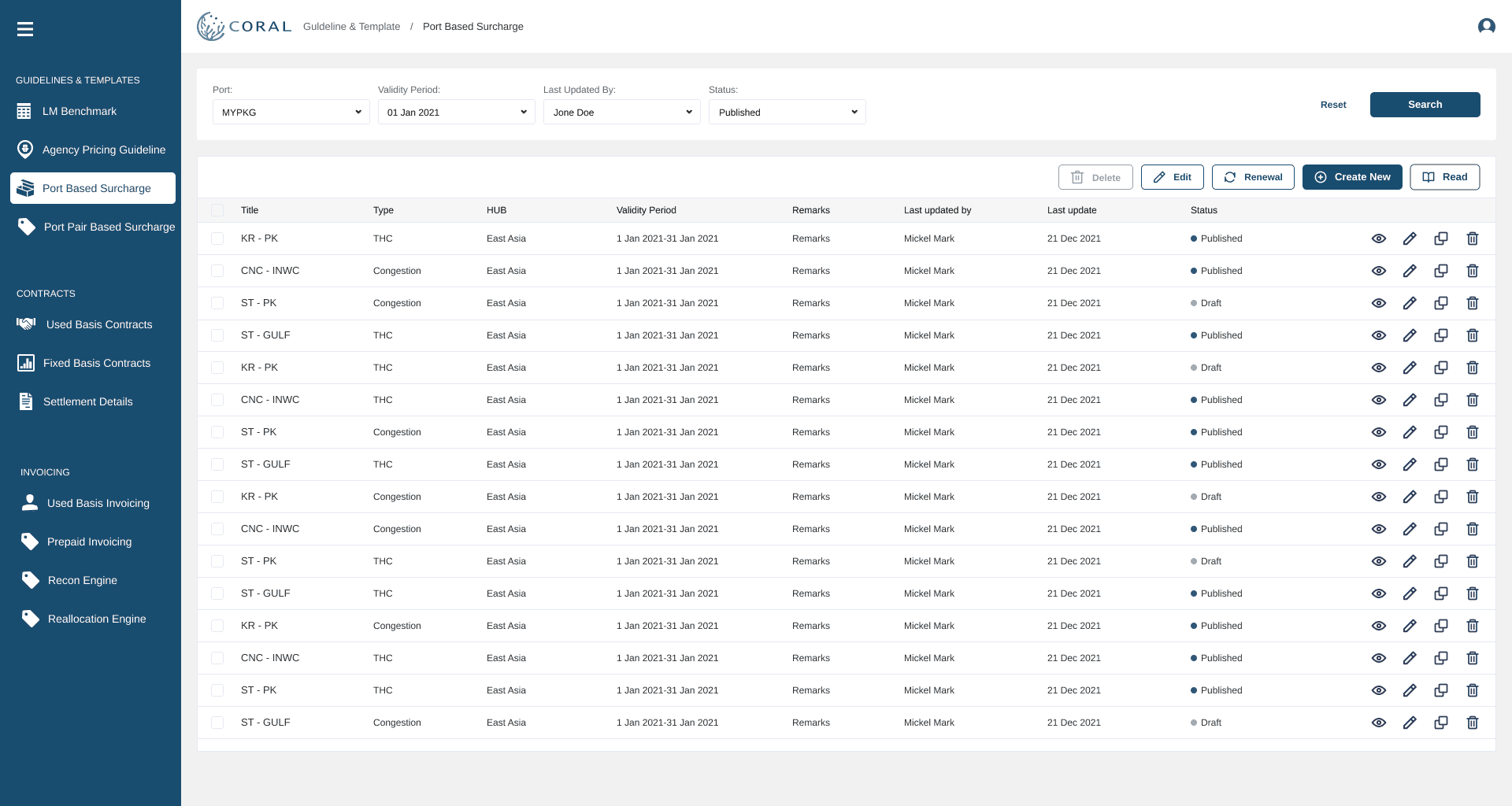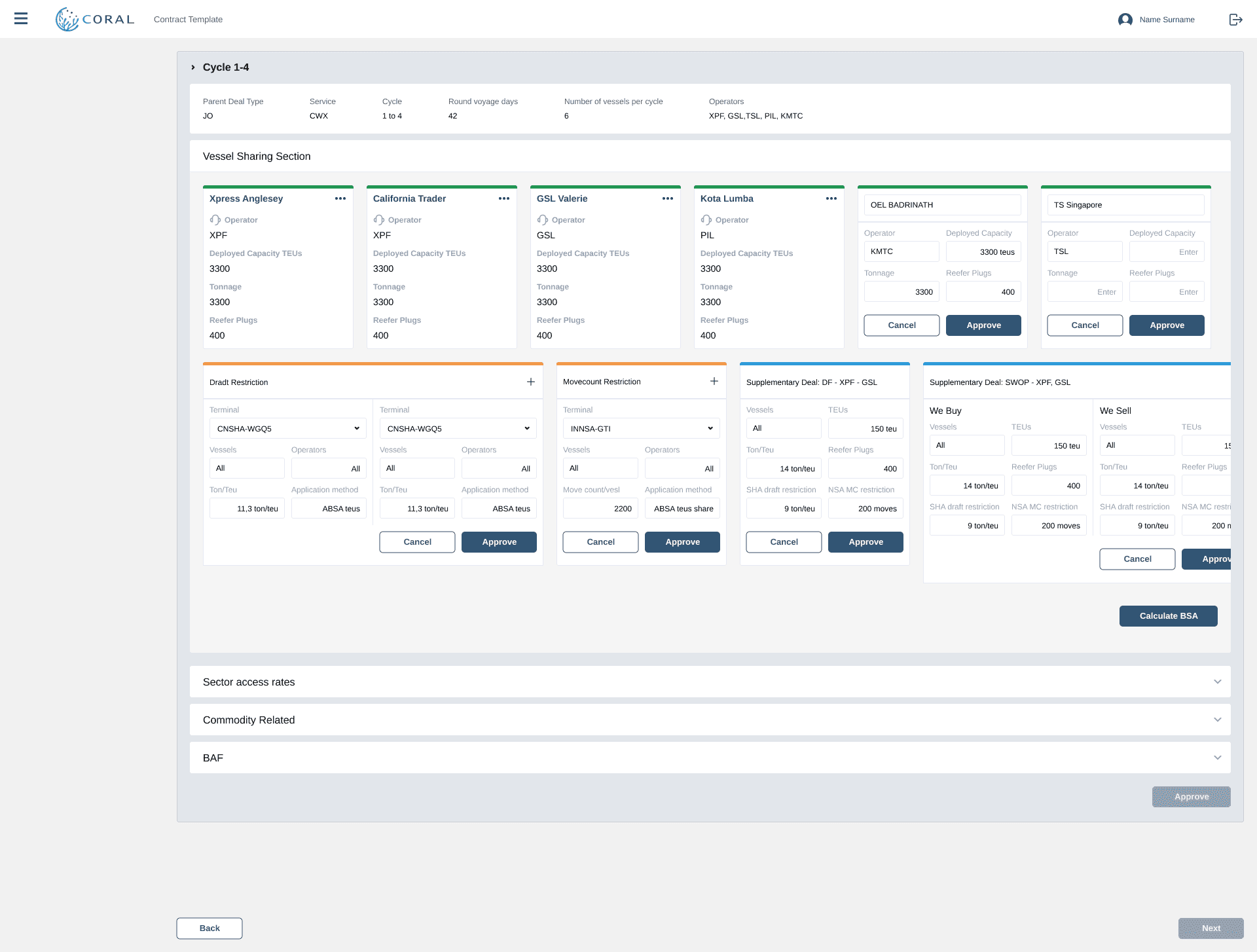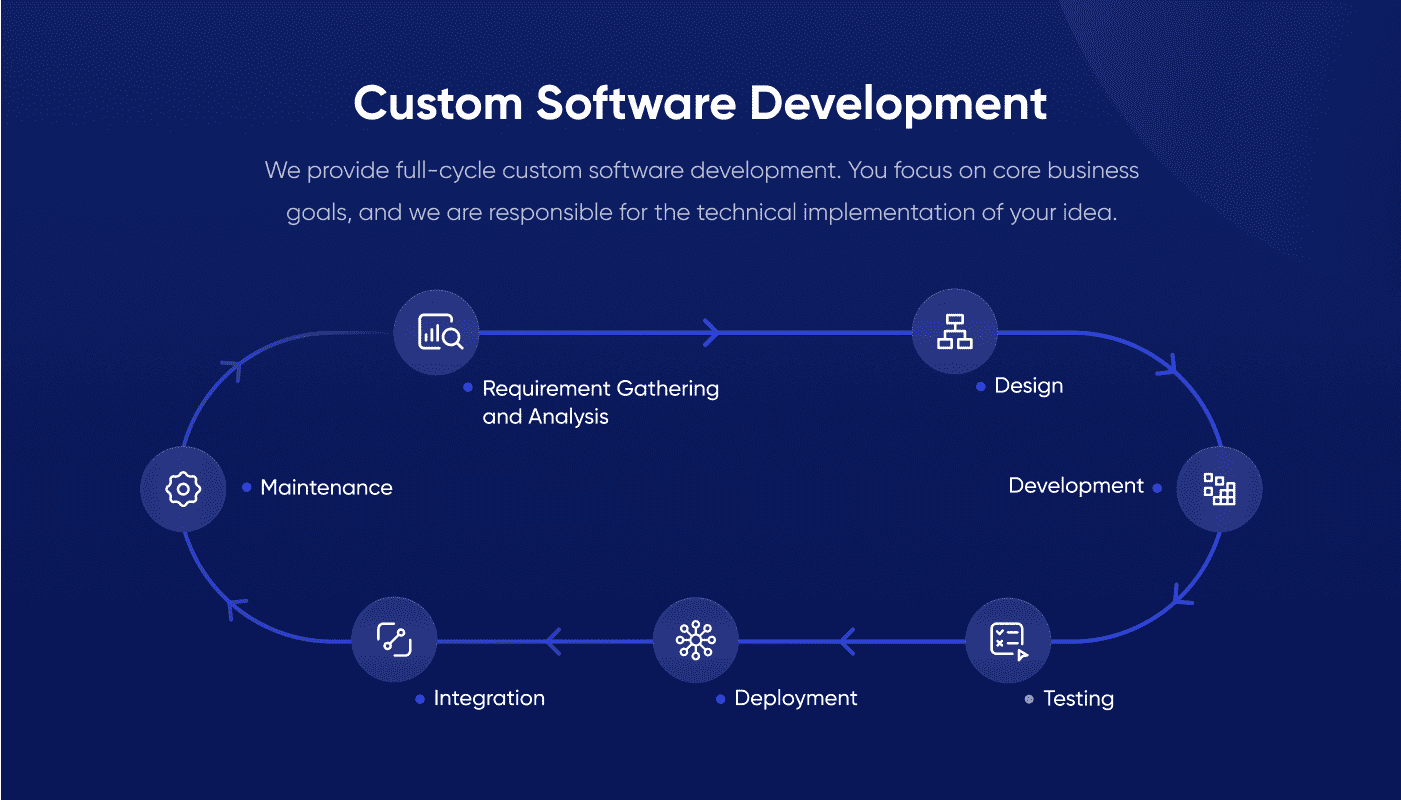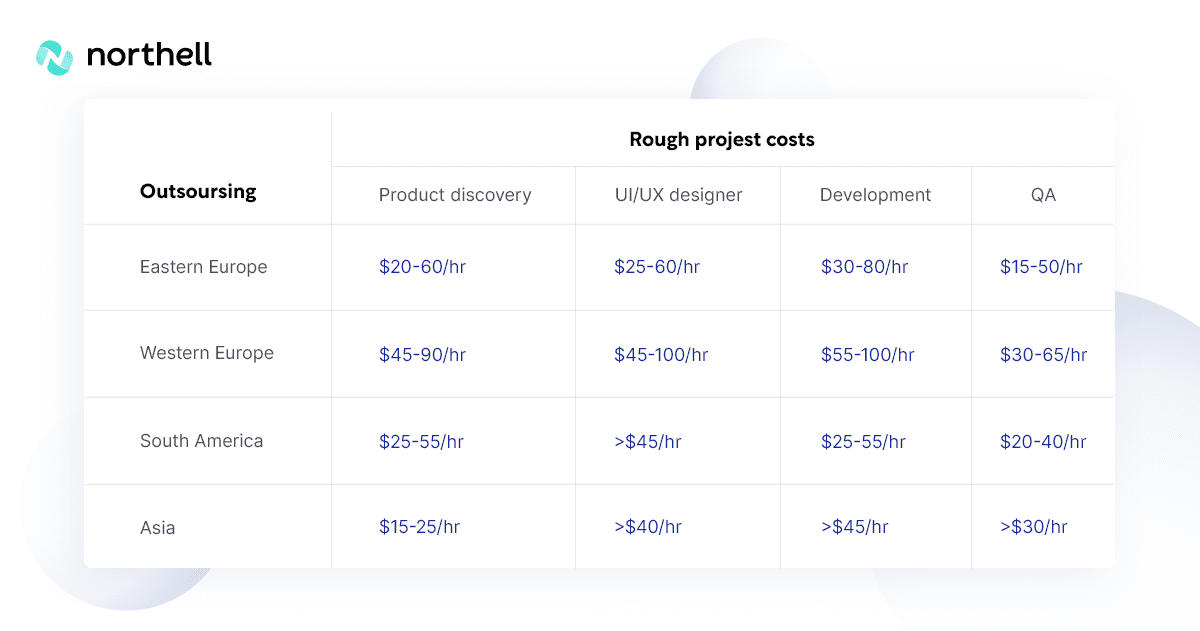Content
Why create yet another software solution for the logistics industry when there are so many already available? The answer is straightforward: to meet the needs of a specific company, ready-made logistics software always necessitates costly and time-consuming customization. Meanwhile, by investing the same money in custom development, your company could benefit from a bespoke logistics solution.
Today in the article, we will look at how to create logistics software from scratch, how much it costs, what features should be added, and lots of other things.
What is Logistics Software Development?
Logistics software is a platform for automating and managing fleet and warehouse tasks like order processing, inventory control, freight transportation, and so on. A platform for logistics improves visibility into workflow processes, boosts supply chain efficiency, enhances customer experience, and can even reduce transportation costs.
Why Does Your Company Need Logistics Software Development?
Let’s look at the main benefits of logistics software for your business:
Process automation
All processes in the company will be fully automated using logistics software. In one system, you will be able to manage various processes such as sending goods, controlling the receipt of goods, replenishing the warehouse, etc. All data will be automatically entered into the software and processed.
Cost optimization
Logistics software can assist your company in cost-cutting measures. You can find more profitable offers for your business by using such a platform, for example, the reports that you will receive. Since everything on the platform will be automated, you will be able to calculate various options for action and decide which option is most suitable for your organization.
Reduction of the human factor
The human factor greatly affects the operation of a business. Why? The answer is simple: people show emotions, get tired, get angry, have personal problems. Because of this, they may be inattentive, make mistakes in filling out documents, for example, and so on. Because the system will do almost everything for you, logistics software can help you solve this problem.
Data collection
Logistics software can both store data and collect it, for example, from different sources. Of course, special features and system configuration are required for the system to collect the required data. However, the availability of a logistics platform is a significant benefit.
New customer service
By developing logistics software, you open up new opportunities and a new type of service for your customers. Such software will not only help your business make the process of deliveries easier but also make the process of receiving orders for customers more efficient and faster.
Reduces costs
Logistics software can help your company save money on a variety of items. For example, because of the system’s precise calculations, you will be able to understand what more money is spent on than necessary, in which sector you can save money, where you can buy goods cheaper, etc.
Capacity Management
Using logistics software, you will be able to control and manage logistics capacity. For example, you will be able to monitor the use of your transportation for delivery or the appropriateness of the use of transportation.
Optimizes work with documents
You will be able to enter all of your company’s documents into the system once logistics software has been developed. That is, you will not need to use heaps of papers to fill out contracts. Instead, you will be able to do everything in the system. Moreover, it is easier to search for the necessary documents with such software.
Logistics Software Development With the RewiSoft Team [Our Cases]
Our team has the necessary expertise to develop excellent and high-quality logistics software. We invite you to take a look at the project of one of our partners:
Cases
One of our partners, X-press Feeders, needed logistics software. X-press Feeders is a long-distance shipping company. The most important request from the X-press Feeders team was to make the system as convenient and user-friendly as possible.


RewiSoft Case – Coral (X-press Feeders)
Our team held several workshops with the X-press Feeders team to study all of the company’s business processes and determine which processes should be handled by the software. It was essential for us to automate as many of the company’s business processes as possible. And having developed logistics software, we successfully did it.
RewiSoft designers have chosen a great minimalist style for the platform to maximize users’ focus on important elements of the software. Our developers have done an excellent job on the inside of the platform and made sure that the software runs without a hitch.
We also worked with Union Marine Management Services (UMMS). Union Marine Management Services (UMMS) was founded in 2012 in Singapore to provide quality ship management services to ship owners all over the world.
Our team helped UMMS create and implement some modules for their logistics software. With our assistance, the UMMS team was able to automate 70% of their business processes, increasing the efficiency and speed of their services.
Logistics Software Development Services
The RewiSoft team can assist you with the following services:
- Business Analysis
- UX design
- UI design
- Product design testing
- Front end development
- Back-end development
- Integration
- Maintenance
If you have ideas for a future project, we will be happy to discuss them. Contact our RewiSoft team!
Logistics Software Development: Key Modules


RewiSoft Case – Coral (X-press Feeders)
Now let’s talk about essential modules that should be in your logistics software:
Warehouse Management System
This module helps track a company’s inventory and helps manage distribution operations. That is, thanks to this module, you will be able to understand, for example, what is / what is not available in the warehouse, how full the warehouse is, when there will be new deliveries/shipments, etc.
Enterprise Resource Planning System
This module aids in the management of day-to-day tasks such as accounting, purchasing, risk and project management, and compliance. You can minimize setbacks through accurate calculations, long-term planning, and project management.
Supply Chain Management System
You need to add this module to your system to evaluate material and human resources, control production and dispatch, and oversee shipments and freightage. That is, it will be easier for you to distribute resources between various operating forces.
Fleet management and vehicle tracking
This module helps coordinate and execute the movement of goods and ensure that shipments are compliant and properly documented. For you, as a logistics company, it is vital that the object from point A gets to point B. For this to be successful, you need this module.
Navigation System
A navigation system is needed, for example, to calculate a faster way to deliver cargo. Or this system is needed so that the client can see where his cargo is, when it arrives at his destination and how much longer it will be on the road.
Data analytics
Data analytics is needed in order to analyze the results of work, compare progress across various channels of the company’s work, study the reasons for possible failures, etc.
What technologies to use to develop logistics software?
Many people think about what technologies to use to develop logistics software. Let’s look at this issue in more detail:
Logistics Front-End Software Development
Front-end is a public part of the software with which the user can interact and contact directly. Front-end includes the display of functional tasks, the user interface performed on the client side, as well as the processing of user requests. In fact, the front-end is everything that the user sees when the system is opened.
Our team recommends using the following tech stacks for the front-end: jQuery, Angular.js, React.js, and Vue.js.
Logistics Back-end Software Development
Back-end is the software and hardware part of the project. Front-end is the client side of the user interface to the software and hardware part of the project, that is, to the back-end. In other words, the back-end is everything that happens on the server side and remains invisible to the user.
Our team recommends using the following tech stacks for the back-end: Python, Node.js, Java, and PHP.
Cloud
In order to develop logistics software that will be used in the cloud, you can use the following tech stacks: Node.js and .NET. However, if you have any questions about logistics software development in the cloud, you can ask our team for help.
Logistics Mobile Development
In order to develop logistics software for mobile, you can use the following tech stacks: Swift, Kotlin and React Native. If you want to learn more about mobile app development, click here.
What Features Do You Need to Develop in Logistics Software?
RewiSoft Case – Coral (X-press Feeders)
We believe you will find it interesting to read about the features that should be present in logistics software. Moreover, we have compiled a list of the most important ones:
GPS tracking
GPS tracking is necessary so that you and your customers can monitor cargo movement in real time. This is convenient because you and your customers will always know what is going on with their cargo, where it is, how quickly it will arrive at the pickup point, and so on.
Notification system
The notification system will assist you and your customers in receiving news, messages regarding cargo sending/receiving, system changes, and so on.
Calculation of deliveries and funds
This feature will help you quickly calculate the amount that you need to spend on shipping. This will save you time and make accurate calculations without errors.
Integration with third-party services
Integration with third-party services will allow you to connect various services you need to the system. It can be CRM or ERP, maps and those services that you usually use.
Creating reports and documents
By adding the ability to create documents and reports to your logistics software, you can work more efficiently. For example, all agreements and contracts will be located in one place with the ability to find the right one by filtering everything quickly. Reports will help you get up-to-date information, for example, on profits in recent months or the number of shipments shipped in the last six months.
Two-factor authentication
To better protect your software, you need to think about two-factor authentication. This feature will allow only those users who pass a double identity verification to enter the system. No one else will be able to log in to your logistics software.
Online payments
For convenience, add the possibility of online payments. This will allow your customers, for example, to pay for deliveries while they are at home or in traffic. This will greatly speed up the delivery process.
Route planning and optimization
This feature will aid in determining the quickest or most efficient route for cargo delivery. It will show all available shipping routes and you will be able to choose the most convenient for you or your client.
How to Develop Logistics Software: a Step-by-Step


Develop Logistics Software: a Step-by-Step
Now let’s look at the main stages of creating logistics software:
Step 1. Write a Project Plan [Budged, Goals]
Begin logistics software development with a strategy. Describe the main steps you should take to create software. Write clearly, without unnecessary details. However, try not to miss important points. You also need to allocate a budget for your project.
We recommend that you set aside money for each stage of logistics software development. Finally, make a decision on your objectives. You and your team should have a clear understanding of the end result that your company should achieve.
Step 2. Hire a Logistics Software Development Contractors
Following that, you should assemble a team of logistics software developers. You can find a good contractor using freelance websites, LinkedIn, friends’ experience, etc. You can also ask our team for help. The RewiSoft team consists of 80% middle and senior designers and developers.
When choosing a contractor for logistics software development, pay attention to work experience, portfolio, previous projects results, and soft/hard skills of team members.
You can get more information about hiring a team for logistics software development in our articles:
- How to Hire Remote Developers in 2023? [Prices, Terms, Tips and Problems]
- How to Hire a Dedicated Software Development Team?
Step 3. Start BA [Main Part]
The next step is the most basic one. You need to conduct a business analysis.To begin the early stages of logistics software development, a basic examination of both the business and the broader market in which you work is essential. To precisely and completely comprehend the requirements for logistics software, you should:
- understand queries and problems;
- find weaknesses in business processes;
- understand why you are losing money;
- identify which places will be problematic in 4 years;
- understand the business schemes and key processes by which your company operates;
- find out the roles and functionality of responsible specialists;
- fix the existing document flow;
- study the market and competitors.
The easiest way for this purpose is to invite one or more business analysts who could study your company’s activities in practice.
Step 4. UX Design
Then you can move on to UX design. UX is vital for any product. Here are 6 steps to successful UX design that our team usually tell about our partners:
Study the users. The first step is to understand exactly who you are designing for. You can create an effective design for your users if you first understand their goals, needs, and desires.
Define scenarios. Next, based on your research, be clear about what you (or rather your users) are trying to achieve. Create the perfect journey map for your client and identify any possible barriers on the way.
Formulate an idea. Gather together all the collected information and start brainstorming. Create a storyboard or mood board to convey the problem you are trying to solve visually.
Create a prototype. Prototyping is the most effective way to bring your idea to life even before the development stage. Lay out a mock-up of the interface with all its important components on paper, and then ask as many people as possible to replay the script.
Test it. Testing is vital for UX design. It doesn’t have to be a long, laborious process. According to the Nielsen Norman Group, 85% of all problems on your site can be detected by just 5 users.
Repeat steps as needed. Depending on your testing results, you may need to go back to the idea stage and find some other alternative solutions. The UX design process is iterative: some steps need to be repeated to achieve the desired result.
Step 5. UI Design
The UI is focused on making the user experience a pleasant experience. UI design is all the elements that the user sees and interacts with.
For example:
- buttons;
- text fields;
- checkboxes;
- sliders;
- search bars;
- tags;
- icons.
Step 6. Build a Logistics Software Development Process [SDLC]
The most crucial stage has arrived. You should translate the design into a genuine functioning product. We divided the entire development process into several steps. Let’s take a closer look at each of them.
Product Technical Documentation
During this stage, all the relevant information from the client is collected to develop a product as per expectations and requirements. The team should write technical documentation and choose technical stacks.
At this stage, the team should also define the requirements for functionality (requirements for the admin panel) and user roles (admin and super admin). The team should finalize the estimate and scope of work.
Development
Developers write code for the components using the documentation and architecture from the previous steps. The duties are assigned to team members based on their areas of expertise.
Front-end developers are responsible for the client side of the application. Back-end developers are responsible for API and database development. The DevOps team works on the CI/CD process.
Testing
QA engineers test all delivered code and carry out manual testing for developed components.
Deployment and Integration
After the development and regression testing from the QA team, the team switched to production deployment and integration. The product’s tested version is distributed to people for beta testing. The team gathers user comments, addresses all issues, and makes certain enhancements.
Maintenance
After deploying a product in the production environment, maintenance of the product, i.e., if any issue comes up and needs to be fixed or any improvements are to be done, it is taken care of by the development team.
Step 7. Copywriting
Copywriting is also important. Everything related to texts, contract templates, onboarding for employees should be done before the product moves to the launching stage.
Step 8. Integration
The last step is the integration step. First, train your employees. To get the most out of logistics software, firm personnel should understand how each component of the system works. You should also link your software to all of the services you use.
Logistics Software Development: Design Challenges
The process of creating a product or solution always has challenges. Here are the design challenges you should consider in logistics software development:
Intelligibility
Intelligibility is in charge of your system’s clarity and readability. Don’t overburden your logistics software with needless data. In order to work with such a system effectively and efficiently, it should be as clear, structured and organized as possible. Divide information into sections, label them and visually highlight them.
Readability
Readability is responsible for how the user will perceive information on the platform. All texts should be optimized for the easiest and most comfortable reading. The font color you use for texts should be bright.
Proper UI Kit
UI kit is a set of ready-made user interface solutions. It can be buttons, input fields, breadcrumbs, menus, radio buttons, forms – all those elements that help users interact with a site, application or software. You will need to create a suitable UI kit for your logistics software. All elements of the platform should be chosen wisely and with taking into account user needs.
Logistics Software Development: Bits of Advice from the RewiSoft Team


Why choose RewiSoft
Our team has prepared some rules that will help you in the process of logistics software development. Let’s take a look at them:
Rule 1. Spend a lot of time analyzing your processes
Examine each step of the logistics software development process. You may enhance processes by analyzing them and making them more efficient and effective. Also, you will be able to detect mistakes in the software creation processes in time and correct them.
Rule 2. Usability must be at a high level
Usability is a qualitative indicator of the simplicity and ease of use of the software. Usability is evaluated according to 5 quality criteria:
- Ease of learning: how easy it is for new visitors to the platform to perform elementary actions, i.e. whether navigation, various pop-ups, ads or videos interfere with them;
- Efficiency: how quickly the user can navigate the platform and perform the actions he needs;
- Memorability: how easily a user can navigate the platform after they return a month later;
- Mistakes: how many mistakes users make and how easily they figure out what’s wrong;
- Satisfaction: The level of satisfaction with using the product. It is influenced by many aspects, among them: navigation, logic, presentation and others.
Rule 3. Work in the clouds
Our team advises you to work in the cloud. First of all, it’s very convenient. No need to install the system on the computer of each employee. You just need to go online and that’s it. The cloud is also a safer way to store data.
Rule 4. Flexibility and scalability of the system are important
It is important to make the system flexible and scalable in the future. If your company is going to grow rapidly, you will need new software capabilities. Therefore, it is essential to build the system in such a way that changes can be made to it in the future.
Rule 5. Introduce new processes gradually
Add everything gradually. When you have produced, for example, one feature, tested it, and then uploaded it to the platform, you are in the ideal process of producing a product. As a result, the logistics development process will become more structured and accurate.
Rule 6. Use outsource team
Use an outsource team to develop logistics software. Firstly, it is a more reliable and cheaper way. Secondly, outsourcing opens up a wide range of talents for you. Thanks to outsourcing, you can find excellent specialists and not for all the money in the world.
Rule 7. You have to be involved
You should be involved in all logistics software development processes. Who better than you knows how the product should turn out in the end. You should monitor the progress of each phase in the software development process. The more you participate in the process, the better the outcome.
How Much Does It Cost to Develop Logistics Software?
How to develop logistics software and not lose lots of money? Before you begin product development, you should first determine how much logistics software will cost and how long it will take to build.
The cost of logistics software development can vary substantially based on the business’s strategy and the desired functionality, making it hard to provide a precise development cost.
However, we have compiled a table of approximate prices for different stages of logistics software development, depending on the country where the design and development team is located.


Rough project costs
Logistics Software Development: Summary
How to develop logistics software? We hope you now definitely have an answer to this question and you have found a lot of useful information in our article. For the process of logistics software development to be successful, you need to remember the following things:
- It’s better to hire an outsource team.
- Take the time to do business analysis and planning.
- Keep in mind 3 important design challenges: intelligibility, readability and proper UI kit.
- Be sure to build the right SDLC.
- It is important to choose the right tech stack to create logistics software.
If you have any questions about how to develop logistics software, please feel free to contact us. Our team is ready for new ideas and projects.







